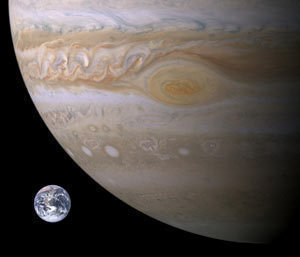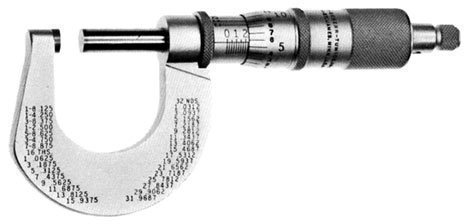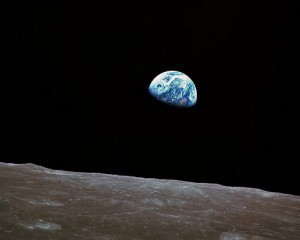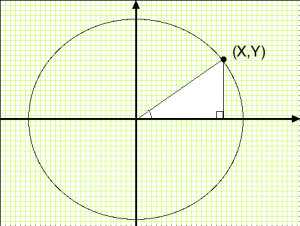Biggest Planet
Named after the king of the Roman gods, the planet Jupiter is  likewise the king of planets in terms of size. Measuring 142,984 km at its equator, it is unquestionably the biggest planet in our solar system. Not only is it larger than each one of the other 8 planets, it is actually 2 ½ times larger than all of them put together.
likewise the king of planets in terms of size. Measuring 142,984 km at its equator, it is unquestionably the biggest planet in our solar system. Not only is it larger than each one of the other 8 planets, it is actually 2 ½ times larger than all of them put together.
The 5th planet from the orbit of the Sun, Jupiter belongs to a planetary class that includes Saturn, Uranus and Neptune. This grouping is referred to as the Outer Planets, also known as the Jovian Planets and the Gas Giants. That last designation certainly applies to Jupiter, as it is largely made up of the gases helium and hydrogen. Jupiter also has the 2nd highest density of all the gas giants at 1,326 g/cm³, which is lower than those of each of the 4 Terrestrial Planets Mercury, Venus, Earth and Mars.
As it is practically a massive ball of gas and has no actual surface, the planet Jupiter was nearly classified as a star. Indeed, its composition is very similar to that of the sun itself. But eventually, it was disqualified due to its size. While it is the biggest planet in the solar system, it has to be around 60 times bigger than its current size in order to be considered as a star. Despite this, Jupiter is still the 3rd brightest heavenly body (right behind the Moon and the planet Venus) that can be viewed by the human eye in the evening sky from the Earth. However, the planet Mars can occasionally burn even brighter than Jupiter from our line of sight.
The planet Jupiter is also known for having the most number of moons. As of now, 63 moons have been discovered, though additional smaller moons may yet exist. The largest of the confirmed moons are Io, Europa, Ganymede and Callisto, collectively known as the Galilean moons (so named because they were discovered by Galileo Galilei in January 1610). These four measure a diameter of more than 3,100 km (1,900 mi), with Ganymede being the 9th largest object in our solar system. The rest of the Jovian moons have a diameter of no less than 250 km (160 mi), most of them hardly even measuring beyond 5 km (3.1 mi).
Although Jupiter is certainly our solar system’s biggest planet, it is interesting to note that it is gradually shrinking as time goes by. In fact, the size of the planet Jupiter actually decreases by approximately 2 cm every year. This does not seem to be a significant loss, and it is unlikely to affect Jupiter’s position as the largest of our 9 planets. But still, it remains that Jupiter will not get any bigger than it already is.





